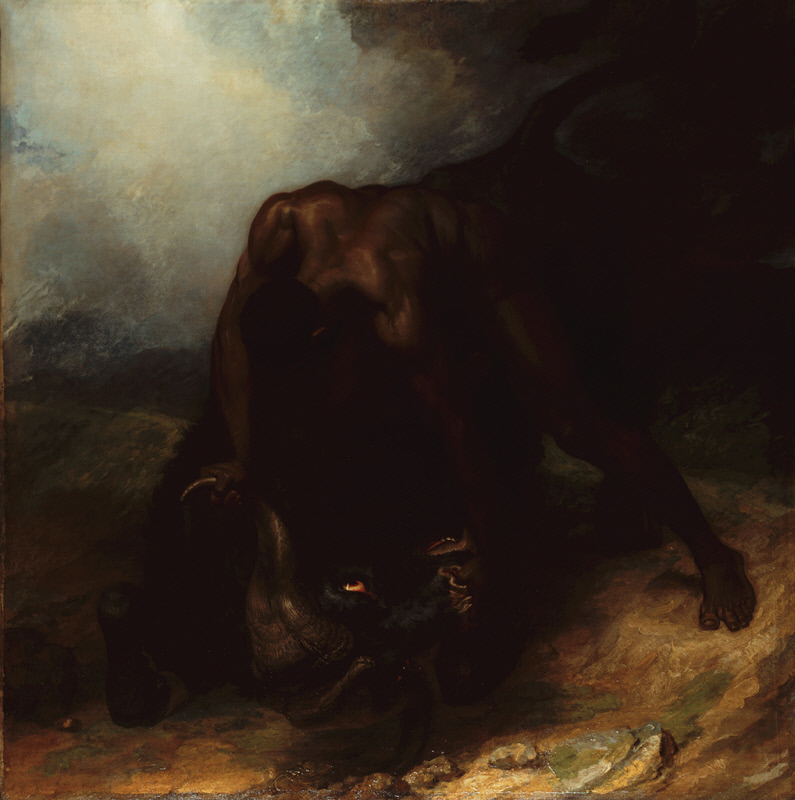British portraitist George Dawe, the son of a well-known engraver named Philip Dawe, completed his training at the Royal Academy of Arts, where he excelled in the study of anatomy. His work caught the attention of Alexander I of Russia, who commissioned him to paint the likenesses of his family and of the senior officers in the Russian army. Dawe moved to St. Petersburg, Russia, in 1819 and worked on the project for nine years, eventually completing over 300 portraits.
Several years prior to his move to St. Petersburg, Dawe painted A Negro Overpowering a Buffalo…, which portrays a dramatic and supposedly true wrestling match between man and animal. The story was told to the artist by an American sailor named Wilson, who is also the figure depicted in this canvas. Wilson (whose first name remains unknown) moved to England in 1810 and worked as a model for Dawe and several other artists, all of whom admired Wilson’s powerful athletic build. At least two of Dawe’s contemporaries remarked on the beauty of Wilson’s physique, comparing his musculature and proportions to those of classical sculptures. Highlighting every tensed muscle of Wilson’s body, Dawe seems to have chosen this improbable story as an opportunity to display Wilson’s physical form to its fullest advantage. Though Dawe celebrates Wilson’s strength, he undermines the subject’s inner life. While the animal’s eye, wide with fear, is emphasized, Wilson’s own face is turned away from the viewer. Dawe thus steals the focus from the scene’s protagonist, denying him fear, courage, or any other human expression.

